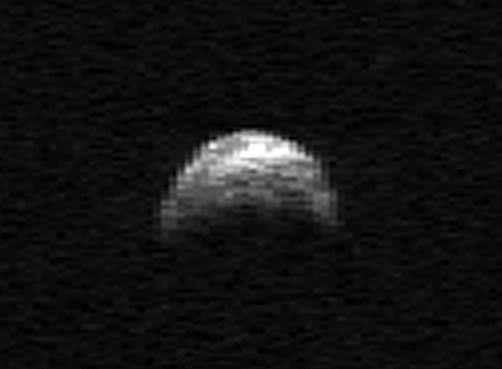Yes, it’s coming. Yes, it’s big. Yes, it will be even closer than the Moon. And yes… we’re completely safe.
The 400-meter-wide asteroid 2005 YU55 is currently zipping through the inner Solar System at over 13 km (8 miles) a second. On Tuesday, November 8, at 6:28 p.m. EST, it will pass Earth, coming within 325,000 km (202,000 miles). This is indeed within the Moon’s orbit (although YU55′s trajectory puts it a bit above the exact plane of the Earth-Moon alignment.) Still, it is the closest pass by such a large object since 1976… yet, NASA scientists aren’t concerned. Why?
Because its orbit has been well studied, there’s nothing in its way, and frankly there’s simply nothing it will do to affect Earth.
Period.
2005 YU55′s miniscule gravity will not cause earthquakes. It has no magnetic field. It will not strike another object, or the Moon, or the Earth. It will not come into contact with cometary debris, Elenin, a black dwarf, Planet X, or Nibiru. (Not that those last three even exist.) No, YU55 will do exactly what it’s doing right now: passing through the Solar System. It will come, it will go, and hopefully NASA scientists – as well as many amateur astronomers worldwide – will have a chance to get a good look at it as it passes.
Scientists with NASA’s Near-Earth Objects Observation Program will begin tracking YU55 on Friday, November 4 using the 70-meter radar telescope at the Deep Space Network in Goldstone, California , as well as with the Arecibo Planetary Radar Facility in Puerto Rico beginning November 8. These facilities will continue to track it until the 10th.
This close pass will offer a great opportunity to get detailed radar imaging of YU55, an ancient C-type asteroid literally darker than coal. Since these objects can be difficult to observe using visible light, radar mapping can better reveal details about their surface and composition.
To help inform the public about YU55 NASA’s Jet Propulsion Laboratory in Pasadena recently hosted a live Q&A session on Ustream featuring specialists Marina Brozovic, a Goldstone Radar Team scientist, and Don Yeomans, manager of NASA’s Near-Earth Object Program. They fielded questions sent in via chat and Twitter… a recording of the event in its entirety can be seen below:
Undoubtedly there will still be those who continue to spread misinformation about 2005 YU55. After all, they did the same with the now-disintegrated comet Elenin. But the truth isout there… and the truth is that there’s no danger, no cover-ups, no “plots”, and simply no cause for concern.
“It’s completely safe… no chance of an impact.”– Don Yeomans, JPL
Read more about YU55 on our previous post or on NASA’s Near-Earth Object Program site.
UPDATE: JPL has released a brief video about YU55 featuring research scientist Lance Benner, who specializes in radar imaging of near-Earth objects:
Although classified as a potentially hazardous object, 2005 YU55 poses no threat of an Earth collision over at least the next 100 years. However, this will be the closest approach to date by an object this large that we know about in advance and an event of this type will not happen again until 2028 when asteroid (153814) 2001 WN5 will pass to within 0.6 lunar distances. – Near-Earth Object Program, JPL
Source: Universe Today


No hay comentarios:
Publicar un comentario